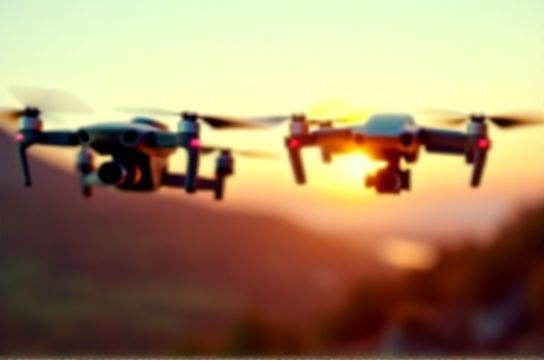Drones for Beginners and Pros: Detailed Analysis of Flight Time
- 时间:
- 浏览:26
- 来源:OrientDeck
So, you're thinking about getting a drone? Or maybe you've already got one and want to squeeze every last second out of the sky? Either way, one question keeps buzzing in every pilot’s mind: How long can this thing actually fly?

Flight time isn’t just a number—it’s the heartbeat of your drone experience. Whether you’re a weekend hobbyist snapping sunset shots or a pro filming cinematic landscapes, knowing what affects flight duration can make or break your mission.
What's the Average Flight Time?
Let’s cut to the chase. Most consumer drones today offer between 15 to 30 minutes of flight time on a single charge. But that sweet spot depends heavily on who you are and what you're flying.
| User Type | Average Flight Time | Common Drone Models |
|---|---|---|
| Beginner | 10–18 mins | DJI Mini 3, Ryze Tello, Holy Stone HS720E |
| Intermediate | 20–25 mins | DJI Air 2S, Autel EVO Nano+ |
| Professional | 25–35 mins | DJI Mavic 3, Inspire 2, Autel EVO II Pro |
Why Don't Drones Fly Longer?
You might wonder—why can’t we get an hour of flight time like some gadgets promise? Blame physics. Drones are power-hungry machines. Motors, GPS, cameras, gimbals, and transmission systems all sip energy from the same limited battery source.
Battery tech hasn’t evolved as fast as drone capabilities. Most use Lithium-Polymer (LiPo) batteries, which are lightweight but degrade over time. After ~200 charge cycles, expect a 15–20% drop in performance.
Real-World vs. Advertised Flight Time
Here’s the kicker: manufacturers often list “ideal” conditions—no wind, constant altitude, minimal camera use. In reality? You’ll likely get 10–20% less than advertised.
- DJI Mavic 3: Claims 46 minutes → Real-world average: ~38 mins
- Mini 4 Pro: 31 mins claimed → Actual: ~25 mins
- Ryze Tello: 13 mins → Often closer to 9–10 mins with tricks
Pro Tips to Maximize Flight Time
- Fly Smoothly: Aggressive maneuvers drain power fast. Gentle throttle = longer flights.
- Lighten the Load: Remove unnecessary accessories. Every gram counts.
- Update Firmware: DJI and others optimize power usage in updates.
- Use Eco Mode: Some drones have energy-saving flight modes.
- Carry Spares: A second battery doubles your fun. Pros carry three.
And hey—if you're serious about aerial work, consider investing in a drone with swappable batteries and fast charging. The DJI Mavic 3 Cine comes with a 100W charger, cutting recharge time to under 40 minutes.
The Future of Flight Time
Innovation is coming. Hydrogen fuel cells and advanced lithium-sulfur batteries are being tested. Some prototypes boast over 2 hours of flight—but don’t expect them in stores tomorrow.
For now, smart flying and spare batteries are your best friends.
So whether you're just starting out or pushing creative limits, understanding flight time helps you plan better, shoot smarter, and stay airborne longer. Now go fly—just don’t forget to land before the battery dies!